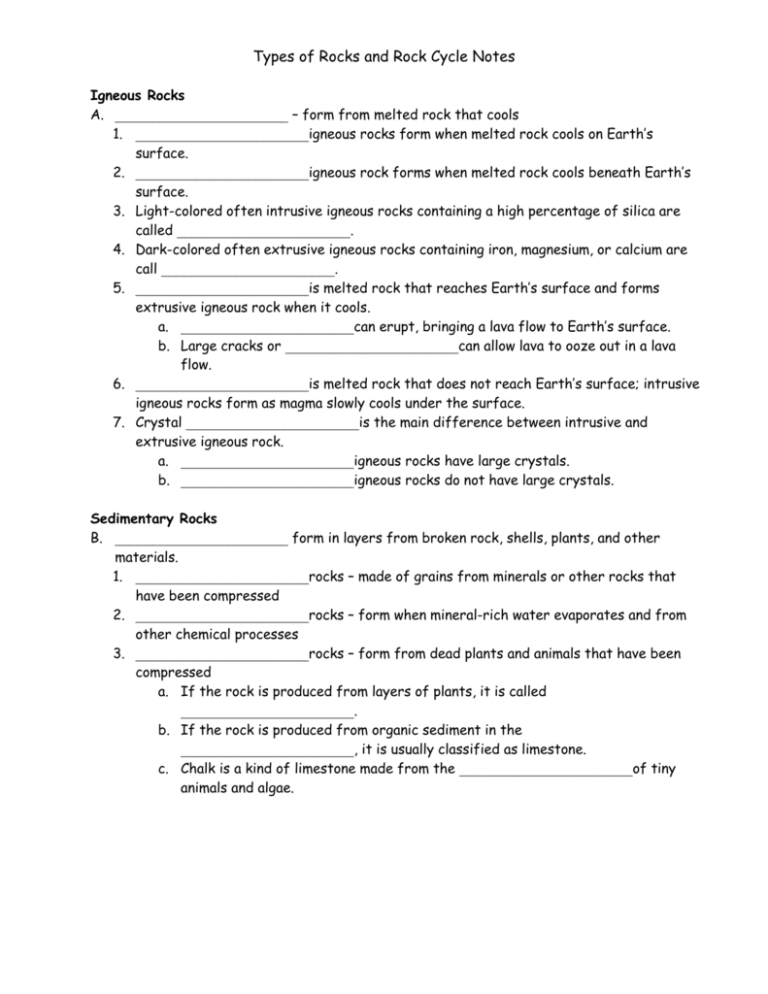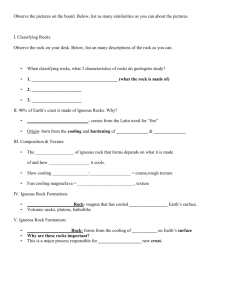Rock Cycle and Types of Rocks Notes
advertisement

Types of Rocks and Rock Cycle Notes Igneous Rocks A. _______________________ – form from melted rock that cools 1. _______________________igneous rocks form when melted rock cools on Earth’s surface. 2. _______________________igneous rock forms when melted rock cools beneath Earth’s surface. 3. Light-colored often intrusive igneous rocks containing a high percentage of silica are called _______________________. 4. Dark-colored often extrusive igneous rocks containing iron, magnesium, or calcium are call _______________________. 5. _______________________is melted rock that reaches Earth’s surface and forms extrusive igneous rock when it cools. a. _______________________can erupt, bringing a lava flow to Earth’s surface. b. Large cracks or _______________________can allow lava to ooze out in a lava flow. 6. _______________________is melted rock that does not reach Earth’s surface; intrusive igneous rocks form as magma slowly cools under the surface. 7. Crystal _______________________is the main difference between intrusive and extrusive igneous rock. a. _______________________igneous rocks have large crystals. b. _______________________igneous rocks do not have large crystals. Sedimentary Rocks B. _______________________ form in layers from broken rock, shells, plants, and other materials. 1. _______________________rocks – made of grains from minerals or other rocks that have been compressed 2. _______________________rocks – form when mineral-rich water evaporates and from other chemical processes 3. _______________________rocks – form from dead plants and animals that have been compressed a. If the rock is produced from layers of plants, it is called _______________________. b. If the rock is produced from organic sediment in the _______________________, it is usually classified as limestone. c. Chalk is a kind of limestone made from the _______________________of tiny animals and algae. Metamorphic Rocks C. Time, _______________________and heat, and events such as erosion and moving land masses, make new rocks out of old rocks. 1. _______________________– form when existing rocks are heated or squeezed; they recrystallize and might change chemically. a. Rocks having visible layers or elongated mineral grains are called _______________________rocks. b. _______________________rocks do not have layers or bands. Rock Cycle D. _______________________– rocks change from one type to another over millions of years. 1. The model, or _______________________, shows each rock on a continuing journey. 2. A rock in _______________________part of the cycle could become any other kind of rock.






